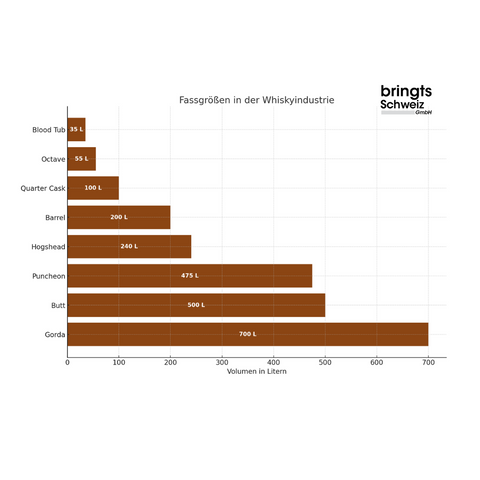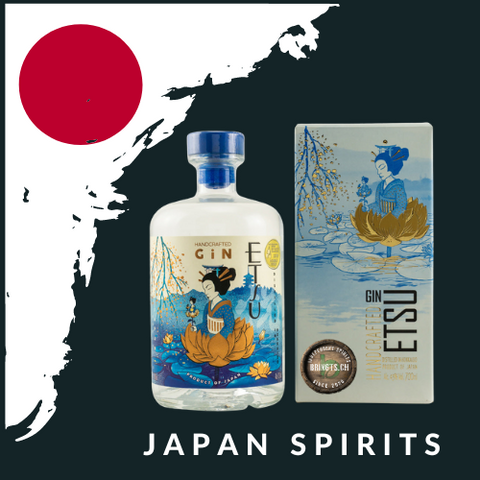Overview of cask sizes in the whisky industry
In the whisky industry, cask sizes play a crucial role as they affect the maturation process and ultimately the taste of the final product. The cask size determines the ratio of wood to whisky, which in turn affects the intensity of the aromas and the speed of maturation. Here is an overview of the most common cask sizes, ordered in ascending order by volume:
1. **Blood Tub (approx. 30 - 40 liters)**
The Blood Tub is the smallest barrel used in whisky production. With a volume of 30 to 40 liters, it offers very intensive contact between the whisky and the wood. This leads to faster maturation and strong aromas. These barrels are mainly used for experimental whiskies or for special maturations.
2. **Octave (approx. 45 - 65 liters)**
The Octave cask has a volume of 45 to 65 liters, which is about an eighth of a sherry butt. Due to its small size, the whisky matures quickly and develops intense aromas. Octave casks are often used for special bottlings or for maturation to give the whisky more complexity in a short time.
3. **Quarter Cask (approx. 50 - 125 liters)**
A quarter cask is a cask that is about a quarter the size of a standard barrel. With a capacity of 50 to 125 liters, it allows for faster maturation due to the high wood-to-whisky ratio. Quarter casks are particularly popular in modern whisky production to achieve more intense flavors in a shorter time.
4. **Barrel (approx. 200 liters)**
The barrel is the standard size in the whisky industry, especially in the USA. It has a volume of around 200 liters and is mainly used for maturing bourbon. This barrel size is also used in Scotland, but less frequently than in the USA. The barrel offers balanced maturation and is often used in initial storage.
5. **Hogshead (approx. 225 - 250 liters)**
The hogshead is an enlarged barrel with a capacity of 225 to 250 liters. This barrel size is widely used in Scottish whisky production and is often converted from American barrels. Hogsheads are often used for maturing single malts and offer longer maturation with more complex flavors.
6. **Puncheon (approx. 450 - 500 liters)**
A puncheon is a barrel with a volume of 450 to 500 liters. It is shorter and wider than a butt, but is used in a similar way. Puncheons are very common in the rum industry, but are also used in whisky production. They offer a slower maturation, which gives the whisky the opportunity to develop smooth and deep flavors.
7. **Butt (approx. 500 litres)**
The butt is a large barrel that is mainly used in sherry production and has a volume of around 500 liters. In the whisky industry, the butt is often used for maturation, especially for whiskies that are stored in sherry casks. These casks give the whisky complex, fruity and nutty aromas.
8. **Gorda (approx. 700 litres)**
The Gorda is one of the largest casks in whisky production, with a capacity of around 700 liters. It is mainly used in the USA to store large quantities of whisky. Due to its size, the whisky matures more slowly, resulting in more subtle and rounded flavors.
Differences between the US and other regions
While in the USA the barrel of around 200 liters is the standard cask for maturing bourbon and must be made of new, burnt oak, in Scotland and other regions of the world different cask sizes and types are common. Used casks in particular, such as sherry butts or converted hogsheads, are popular in Scottish whisky production. This variety of cask sizes and types contributes to the complexity and variety of the whiskies produced around the world.
The choice of cask, both in terms of size and type, is a crucial factor that significantly influences the character and quality of the whisky.



Comments (0)
There are no comments for this article. Be the first one to leave a message!